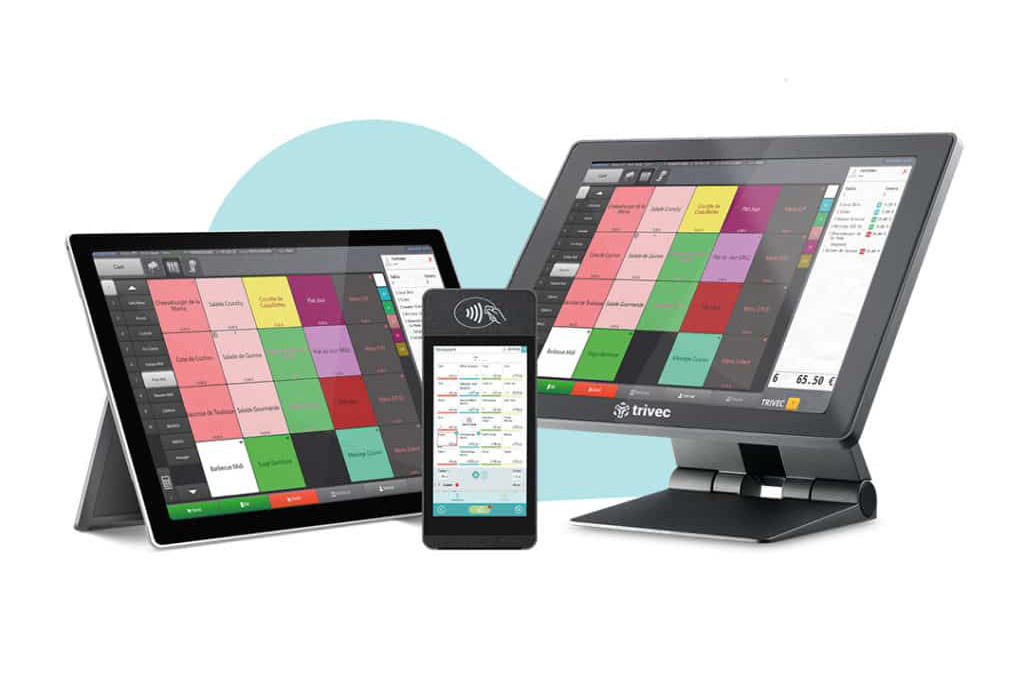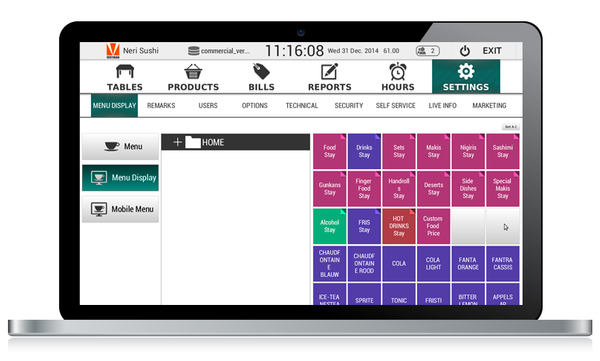Critical errors when implementing Restaurant POS Software
Exactly How POS System Functions: A Comprehensive Guide for Entrpreneurs
A POS system serves as a necessary tool for modern-day companies, integrating various parts to simplify operations. It includes hardware like barcode scanners and software application to buy tracking. This system not just processes purchases however also manages inventory and analyzes customer habits. Comprehending its functionality can substantially impact a service's effectiveness and decision-making. What are the crucial elements that add to this efficiency? Checking out these parts uses beneficial insights.
Comprehending the Parts of a POS System
A Point of Sale (POS) system is composed of several essential elements that work with each other to assist in purchases and take care of company procedures. At its core, the equipment consists of devices such as a sales register, barcode scanner, receipt printer, and repayment terminal, all vital for processing sales (Restaurant POS Software). The software component manages supply, sales tracking, and consumer data, giving valuable understandings for business decisions.Additionally, databases store purchase records and client details, guaranteeing data integrity and safety. Network connection enables real-time updates and access to cloud-based solutions, improving operational efficiency. Interface, designed for convenience of usage, enable team to browse the system promptly, decreasing training time. With each other, these components create a natural system that enhances the sales procedure, boosts customer care, and help in effective administration of organization resources. Recognizing these elements is essential for company owner seeking to enhance their POS systems
How Sales Transactions Are Refined
When a consumer determines to make a purchase, the sales deal initiates a series of systematic actions within the POS system. The cashier inputs the things being acquired, which are checked with a barcode reader or manually entered. This action recovers product information, including pricing and suitable tax obligations, from the system's database.Next, the consumer exists with the overall amount due. The POS system after that processes the payment, whether through cash money, credit history card, or mobile repayment approaches. For electronic settlements, the POS firmly connects with repayment processors to license and validate the transaction.Once the payment is verified, the system creates a receipt, which can be published or sent digitally. This invoice works as proof of acquisition for the customer. Lastly, the transaction information is taped in the system, making certain precise sales documents and financial tracking for the organization.
Inventory Monitoring and Tracking
Reliable inventory monitoring and tracking are crucial elements of a POS system, as they guarantee that businesses preserve click to find out more perfect supply levels and minimize inconsistencies. A robust POS system enables real-time supply updates, mirroring sales and returns immediately. This makes it possible for local business owner to monitor stock levels precisely, guaranteeing that preferred items are readily offered while preventing overstocking of less prominent products.Additionally, advanced POS systems use attributes such as computerized supply alerts and reorder recommendations, enhancing the procurement process. Barcoding and RFID innovation improve accuracy in tracking stock movement, decreasing human mistake. Comprehensive coverage tools offer understandings into inventory turnover prices, assisting businesses make informed choices concerning purchasing and product offerings. Ultimately, efficient supply monitoring through a POS system not just enhances functional effectiveness however likewise enhances client fulfillment by guaranteeing product schedule.

Evaluating Client Information and Insights
Consumer data analysis offers as an effective device for services utilizing a POS system. By gathering and examining purchase information, services can uncover useful insights concerning customer actions and choices. This evaluation allows them to recognize buying fads, peak purchasing times, and preferred items, therefore notifying supply decisions and marketing strategies.Additionally, organizations can section their customer base, enabling individualized advertising initiatives that cater to details demographics or purchasing routines. Understanding consumer loyalty patterns additionally assists in developing targeted promotions and benefits programs.The data amassed from a POS system can also expose insights right into customer responses, enabling services to make educated decisions regarding item offerings and service renovations. Inevitably, leveraging customer data effectively can enhance the overall purchasing experience, foster client complete satisfaction, and drive profits development.
Advantages of Carrying Out a POS System
Applying a POS system supplies countless benefits that can substantially enhance company operations. To start with, it check my blog enhances transaction procedures, minimizing delay times and enhancing client contentment. By automating sales processes, services can lessen human mistake and warranty accurate record-keeping. Additionally, a POS system gives beneficial data analytics, making it possible for owners to track sales trends and supply levels in real-time. This understanding supports educated decision-making, helping to maximize supply management and marketing strategies.Moreover, numerous POS systems incorporate with various other organization devices, such as accounting software program, simplifying economic administration. Improved worker monitoring functions, such as tracking hours and performance, further add to operational efficiency.Lastly, the implementation of a POS system can bring about raised revenue with boosted customer experiences and critical understandings, ultimately cultivating organization growth and sustainability.
Often Asked Inquiries
What Types of Services Can Gain From a POS System?

Exactly how Much Does a POS System Generally Cost?
The cost of a POS system normally ranges from a few hundred to a number of thousand dollars, depending upon functions, hardware, and software application - Restaurant POS Software. Companies need to take into consideration ongoing charges for maintenance, support, and deal processing when budgeting

Can I Integrate a POS System With Existing Software?
Incorporating a POS system with existing software application is frequently viable. Several systems provide APIs or built-in compatibility attributes, enabling organizations to improve procedures and enhance performance by attaching numerous software applications efficiently.
What Training Is Required for Personnel to Make Use Of a POS System?
Educating for team to utilize a POS system generally includes understanding software functionalities, processing transactions, handling stock, and dealing with consumer interactions - Restaurant POS Software. Practical presentations and hands-on session improve effectiveness and confidence being used the system efficiently
What Takes place if the Net Decreases While Using a POS System?
If the internet decreases throughout POS system use, transactions may be disrupted. Lots of systems provide offline capabilities, allowing standard procedures to continue, however complete functionality, consisting of real-time supply updates, will be limited.